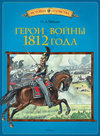
1320
Source: Wikipedia. Pages: 44. Chapters: 1320 births, 1320 deaths, 1320 establishments, 1320 in law, Conflicts in 1320, Declaration of Arbroath, William of Wykeham, Valdemar IV of Denmark, Ayurbarwada Buyantu Khan, Emperor Renzong of Yuan, Holyrood Church,... Viac o knihe
Produkt je dočasne nedostupný
15.93 €
bežná cena: 18.10 €
O knihe
Source: Wikipedia. Pages: 44. Chapters: 1320 births, 1320 deaths, 1320 establishments, 1320 in law, Conflicts in 1320, Declaration of Arbroath, William of Wykeham, Valdemar IV of Denmark, Ayurbarwada Buyantu Khan, Emperor Renzong of Yuan, Holyrood Church, Southampton, Ukhaantu Khan, Emperor Huizong of Yuan, Peter I of Portugal, Tr¿n Anh Tông, Riccoldo da Monte di Croce, Ph¿m Ngu Lão, Beatrice of Bourbon, Bertrand du Guesclin, Blanche of Namur, Henry Yevele, Satto, Geoffroy IV de la Tour Landry, Lalleshwari, St. Nicholas' Collegiate Church, Siemowit III, Duke of Masovia, Michael IX Palaiologos, Margaret, Duchess of Norfolk, Joan FitzGerald, Countess of Carrick, Johannes de Grocheio, Perenelle Flamel, Chen Youliang, Isabella, Countess of Fife, Otto, Duke of Brunswick-Grubenhagen, Nijo Yoshimoto, Mary of Lancaster, Shepherds' Crusade, Galeazzo II Visconti, Michael Panaretos, Rudolph, Duke of Lorraine, List of state leaders in 1320, Oshin, King of Armenia, Yasa'ur, Shams al-Din Abu Abd Allah al-Khalili, Nissim of Gerona, Pope John VIII of Alexandria, Louis, Prince of Taranto, Peter of Aspelt, Jan Muskata, John Dalderby, Margaret of Castello, Everard 't Serclaes, Qutb ud din Mubarak Shah, Radulphus Brito, Nichiro, Benvenuto Rambaldi da Imola, Konstantinos Armenopoulos, Antonius Andreas, Bodzanta, Jan of Czarnków, Adalbertus Ranconis de Ericinio, Árni Helgason, Gerhard Rode, Gennaro di Cola, Filippo Tesauro, Li Kan, Kujo Moronori, Gabriele Adorno, Arnaud d'Aux, David de Brechin. Excerpt: Valdemar IV of Denmark or Waldemar (c. 1320 - 24 October 1375); Danish: Valdemar Atterdag (the epithet meaning "A New Dawn"), was King of Denmark from 1340 to 1375. He was the youngest son of Christopher II and spent most of his childhood and youth in exile at the court of Louis IV, Holy Roman Emperor in Bavaria after the defeats of his father. Here he acted as a pretender waiting for a comeback. Following the assassination of Count Gerhard III by Niels Ebbesen and his brothers, Valdemar was proclaimed King of Denmark at the Viborg Assembly (landsting) on St Hans Day, 21, June 1340 led by Niels Ebbesen. By his marriage with Helvig, the daughter of Eric II, Duke of Schleswig and what was left to him by his father, he controlled about one quarter of the territory of Jutland north of the Kongeå river. He was not compelled to sign a charter as his father had done, probably because Denmark had been without a king for years, and no one expected the twenty year old king to be any more trouble to the great nobles than his father had been. But Valdemar was a clever and determined man and realized that the only way to rule Denmark was to get control of its territory. Ebbesen attempted to liberate central Jutland from the Holsteiners at the siege of Sønderborg Castle on 2 November 1340, but Ebbesen and his brothers were killed. Under Christopher II, Denmark went bankrupt and was mortgaged out in parcels. Valdemar sought to repay the debt and reclaim the lands of Denmark. The first opportunity came with the money Helvig brought with her into the marriage. The mortgage on the rest of northern Jutland was paid off by taxes collected from Valdemar's peasants above the Kongeå. He was able to get North Friesland back in 1344, which he immediately taxed to pay off the debt on southern Jutland, 7000 silver marks. The over-taxed peasants grew restive under the constant demands for money. Valdemar next set his sights on Zealand. The bishop of Roskilde, who owned ...
- Vydavateľstvo: Books LLC, Reference Series
- Formát: Paperback
- Jazyk:
- ISBN: 9781157578284


 Anglický jazyk
Anglický jazyk 



 Ruský jazyk
Ruský jazyk 





